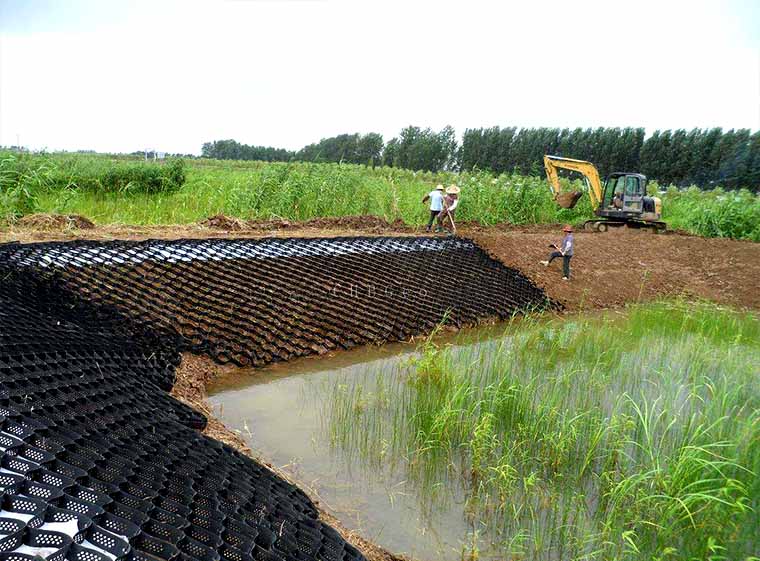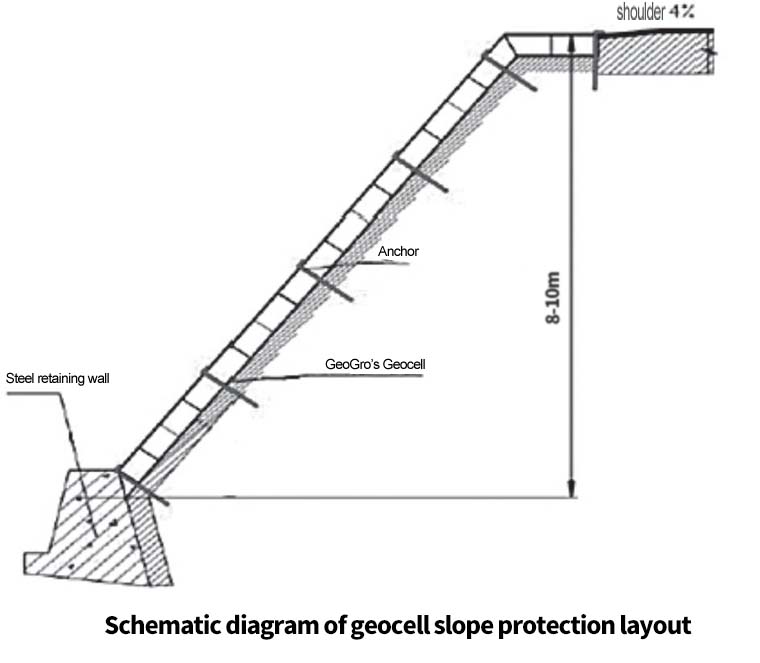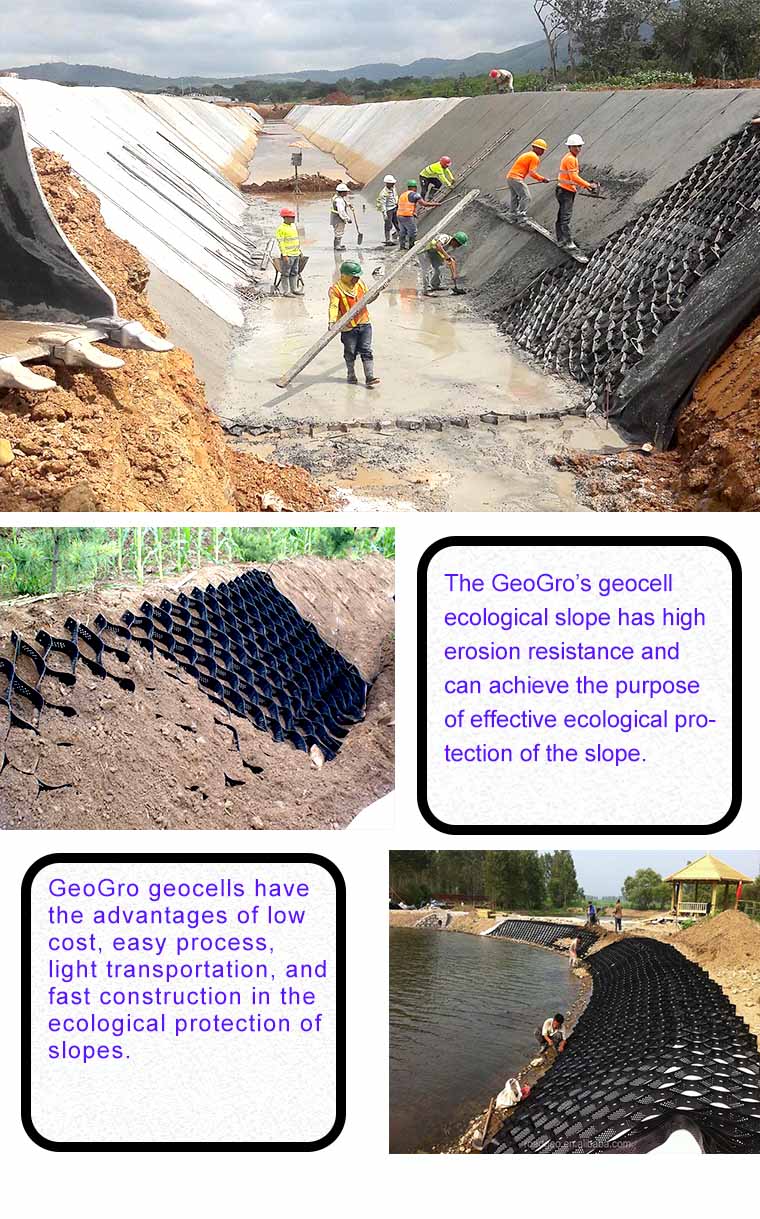
For the cement, steel and other raw materials used in slope protection, the corresponding specifications have put forward specific requirements. If the conditions for obtaining local materials cannot be met, outsourcing or long-distance transportation of raw materials is required, and the purchase and transportation costs are huge. The geocells can be used to obtain materials nearby, which is convenient for transportation and easy to lay. It has higher ecological requirements and is suitable for vegetation growth areas. The slope disposal effect is even better.

Slope ecological protection mostly uses GeoGro's high-strength geocells, which not only have high breaking
strength per unit width (general strength ≥ 800N/cm), joint peel strength (general strength ≥
400N/cm), and cell welding joint shear force (General strength ≥ 10000 N/cm) and high fatigue
strength, and the corrosion resistance of the material is also excellent. The GeoGro's geocell has a strong
lateral restriction effect on the slope filling material. Its ability to interlock with the granular
material of the filler can restrict the lateral movement of the granular material. After slope
protection paving, a large honeycomb-shaped three-dimensional grid can be formed
The net is laid on the surface of the side slope, and the three-dimensional grid is filled with
aggregate or soil suitable for vegetation growth, and planted with grass and trees suitable for the
local area.
According to actual needs, single-layer or multi-layer geocells can be arranged to play
the main role of stabilizing the slope. In the later operation, even under the impact of water flow,
the stability of the slope can be controlled accordingly. The rainwater inside the slope can penetrate
each other through the openings of the side panels of the geocell to keep the drainage unobstructed.
The geocell has good water conductivity, and at the same time for
Flowing water can also play a role in alleviating energy dissipation. The water carried by the side
slope can be deposited in the cell, effectively avoiding the loss of grass seeds and vegetation
seedlings being washed away by rain, and increasing the plant coverage and survival rate.

